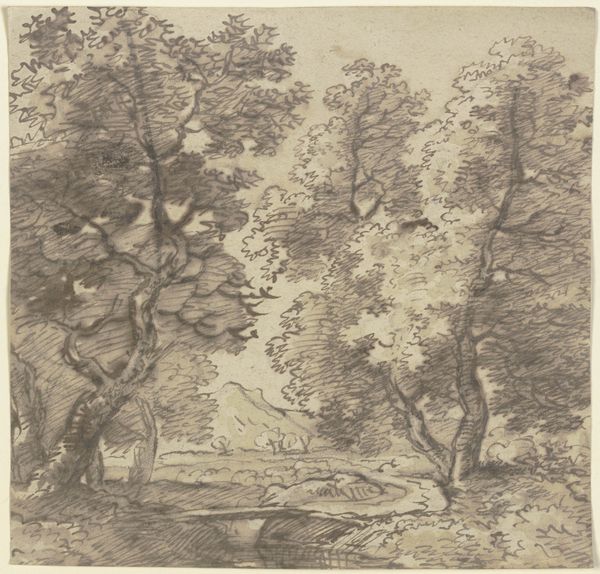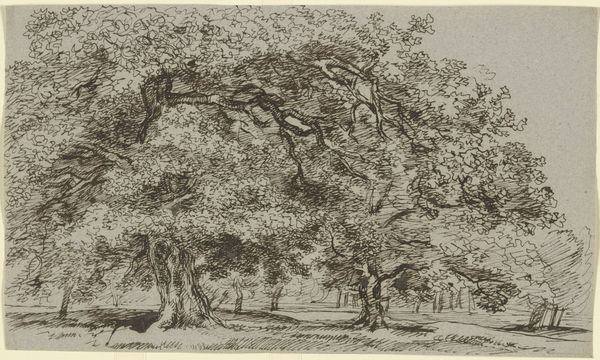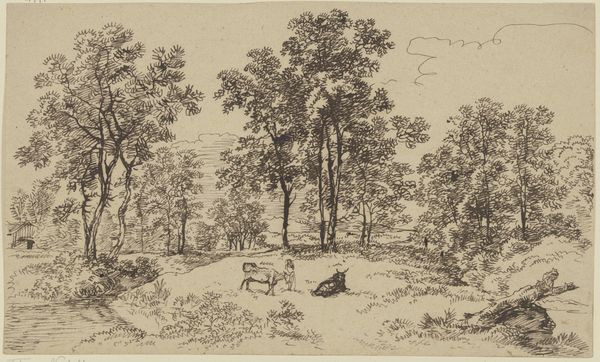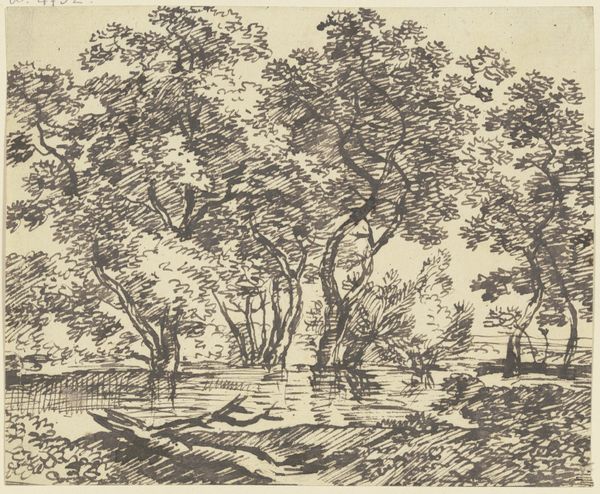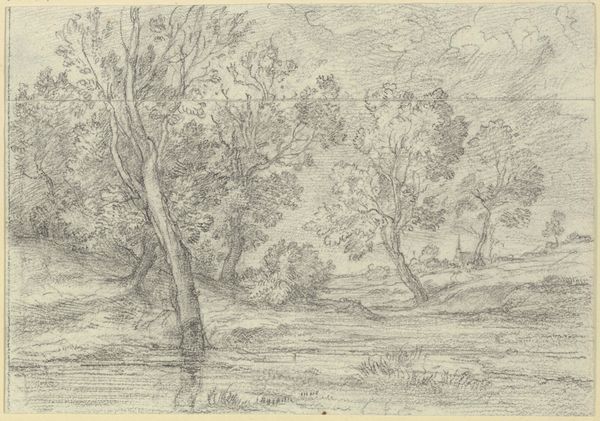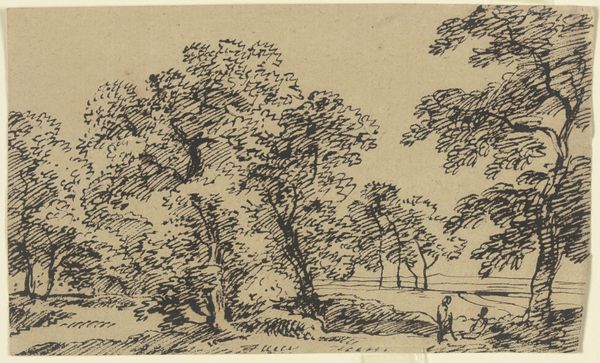
drawing, ink, pencil, pen
#
drawing
#
pen sketch
#
pencil sketch
#
landscape
#
ink
#
romanticism
#
pencil
#
line
#
pen
#
realism
Copyright: Public Domain
Curator: What strikes me most about this drawing, "Baumgruppe an einem Gewässer," by Franz Kobell, is its immediacy, like a captured moment. Look at the subtle interplay of light and shadow rendered through pencil, pen and ink. Editor: It has an undeniable romantic yearning for the natural world. The loose, expressive lines really speak to a desire for communion with landscape. Do you think Kobell's perspective on landscape, its function, has some impact on it? Curator: Certainly. Throughout his artistic explorations, including his time painting landscapes he offers insights into broader issues around preservation of nature during a period when the concept of environmental consciousness was really taking hold, how that relationship was seen, and documented through his art. He captures nature at a tipping point in social consciousness. Editor: Absolutely, landscape art during that period starts to reflect an increasing awareness of land use and conservation, and here we witness it taking shape. Curator: His work isn't explicitly political, but its sensitive depiction of a world threatened resonates strongly with the ecological questions we face today. The role of natural beauty. I can’t help but wonder how accessible this beauty was for whom during this historical time? Editor: A key point. It reminds us of how different interpretations of the natural world can fuel activism. It’s fascinating how this single image, seemingly simple, unlocks these complex historical layers about perception, gender, class and, really, our place within nature. Curator: Ultimately, seeing this now, as we reckon with so much climate precarity, asks us to challenge the forces shaping both landscapes, and art about landscapes.
Comments
No comments
Be the first to comment and join the conversation on the ultimate creative platform.
